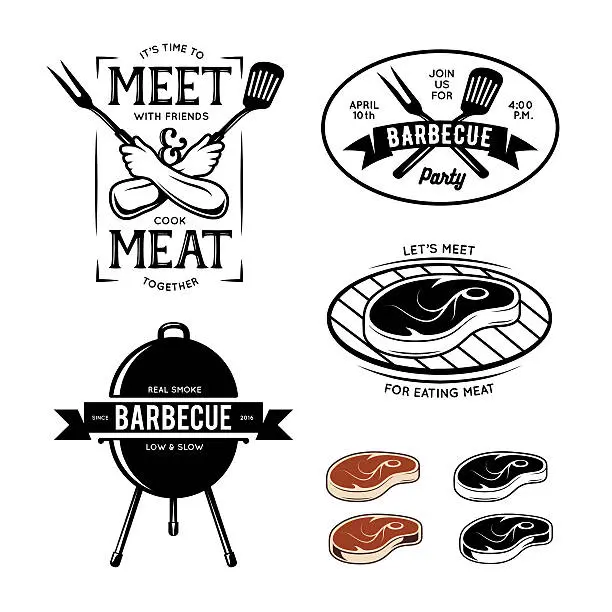When it comes to smoked meat, one intriguing aspect that often catches the eye is the appearance of a red ring. This distinct feature, also known as the smoke ring, has sparked curiosity among meat enthusiasts and barbecue aficionados. In this article, we will delve into the reasons behind the red ring on smoked meat and explore its significance.
What is the Smoke Ring on Smoked Meat?
The smoke ring refers to the reddish-pink discoloration that forms on the outer layer of smoked meat. It is typically found just beneath the surface, creating a visually appealing contrast to the browned exterior. Despite its name, the smoke ring is not actually caused by smoke, but rather by a chemical reaction.
When wood smoke interacts with the surface of the meat, it releases nitrogen dioxide (NO2) gas. This gas then combines with the myoglobin, a protein responsible for the meat's color, forming a compound known as nitric oxide (NO). Nitric oxide reacts with the myoglobin to produce nitric oxide myoglobin, which gives the meat its characteristic pink hue.
Why Does Smoked Meat Have a Pink Ring?
The presence and intensity of the smoke ring can vary depending on several factors, including the type of meat being cooked. Different animals and cuts of meat have varying amounts of myoglobin in their muscles, which affects the depth of the smoke ring.
For example, wild game and whales with deep red meat can develop an even deeper smoke ring compared to beef brisket. Some heritage pork, which often has darker meat, may also exhibit a more prominent smoke ring than commodity pork. On the other hand, chicken breast, which has minimal myoglobin, will have a harder time developing a deep smoke ring.
Factors Affecting the Smoke Ring
While the type of meat is a significant factor, other variables can influence the formation of the smoke ring:
- Smoking Method: The smoke ring tends to develop more readily in low and slow cooking methods, such as traditional barbecue smoking, where the meat is exposed to smoke for an extended period.
- Wood Selection: Different types of wood produce varying levels of nitrogen dioxide, which can affect the intensity of the smoke ring. Hardwoods like hickory and oak are known to generate more nitrogen dioxide compared to fruitwoods like apple or cherry.
- Temperature: The temperature at which the meat is smoked also plays a role. Lower temperatures allow for a longer exposure to smoke, enhancing the formation of the smoke ring.
- Moisture Content: Moisture on the surface of the meat can facilitate the chemical reaction between nitrogen dioxide and myoglobin, leading to a more defined smoke ring.
The Significance of the Smoke Ring
While the smoke ring primarily serves as a visual indicator of the smoking process, it is often associated with exceptional flavor and tenderness. Many barbecue enthusiasts consider a well-developed smoke ring as a mark of skill and expertise in the art of smoking meat.
The smoke ring is also believed to enhance the overall taste and juiciness of the meat. Some experts claim that the compounds formed during the chemical reaction contribute to a more complex flavor profile, adding depth and richness to the smoked meat.
Frequently Asked Questions
Can the smoke ring be achieved with other cooking methods?
The smoke ring is primarily associated with low and slow cooking methods, where the meat is exposed to smoke for an extended period. While it is challenging to replicate the smoke ring's appearance using alternative cooking methods, such as grilling or baking, the flavors and tenderness achieved through smoking can still be enjoyed.
Does the smoke ring indicate the meat is fully cooked?
No, the presence of a smoke ring does not necessarily indicate that the meat is fully cooked. The smoke ring is solely a result of the chemical reaction between nitrogen dioxide and myoglobin. It is essential to use a reliable meat thermometer to ensure that the internal temperature reaches the recommended level for safe consumption.

Can the smoke ring be enhanced or manipulated?
The formation of the smoke ring primarily relies on the natural chemical reaction between nitrogen dioxide and myoglobin. While certain factors can influence its development, such as the type of wood or smoking temperature, it is challenging to manipulate or enhance the smoke ring significantly.
In Conclusion
The smoke ring on smoked meat is a fascinating phenomenon that adds visual appeal and is often associated with exceptional flavor and tenderness. Understanding the science behind the smoke ring can deepen our appreciation for the art of smoking meat and help us achieve the desired results in our culinary endeavors.
If you want to know other articles similar to Unveiling the mystery of the smoked meat logo you can visit the Smoke ring category.

